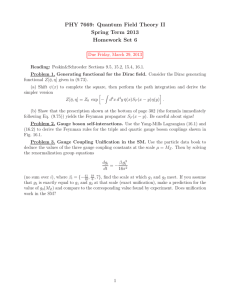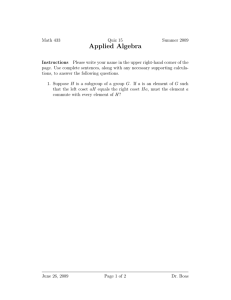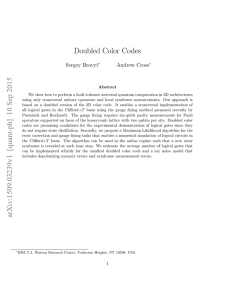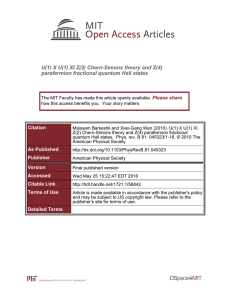Document 10583871
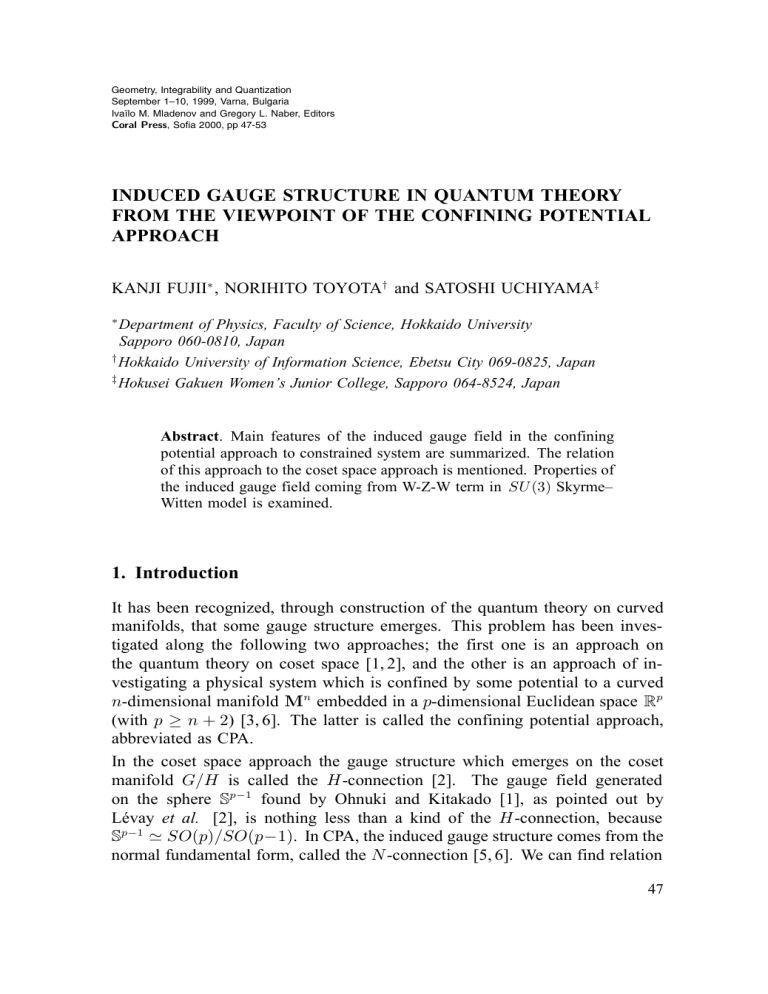
Geometry, Integrability and Quantization
September 1–10, 1999, Varna, Bulgaria
Ivaïlo M. Mladenov and Gregory L. Naber, Editors
Coral Press
, Sofia 2000 , pp 47-53
INDUCED GAUGE STRUCTURE IN QUANTUM THEORY
FROM THE VIEWPOINT OF THE CONFINING POTENTIAL
APPROACH
KANJI FUJII
∗
, NORIHITO TOYOTA
† and SATOSHI UCHIYAMA
‡
∗
Department of Physics, Faculty of Science, Hokkaido University
Sapporo 060-0810, Japan
†
Hokkaido University of Information Science, Ebetsu City 069-0825, Japan
‡
Hokusei Gakuen Women’s Junior College, Sapporo 064-8524, Japan
Abstract. Main features of the induced gauge field in the confining potential approach to constrained system are summarized. The relation of this approach to the coset space approach is mentioned. Properties of the induced gauge field coming from W-Z-W term in
SU (3) Skyrme–
Witten model is examined.
1. Introduction
It has been recognized, through construction of the quantum theory on curved manifolds, that some gauge structure emerges. This problem has been investigated along the following two approaches; the first one is an approach on the quantum theory on coset space [1, 2], and the other is an approach of investigating a physical system which is confined by some potential to a curved n
-dimensional manifold
M n embedded in a p
-dimensional Euclidean space
R p
(with p ≥ n
+ 2 ) [3, 6]. The latter is called the confining potential approach, abbreviated as CPA.
In the coset space approach the gauge structure which emerges on the coset manifold
G/H is called the
H
-connection [2]. The gauge field generated
− 1 on the sphere
S p found by Ohnuki and Kitakado [1], as pointed out by
Lévay et al. [2], is nothing less than a kind of the
H
-connection, because
S p
− 1 ' SO
( p
)
/SO
( p −
1) . In CPA, the induced gauge structure comes from the normal fundamental form, called the
N
-connection [5, 6]. We can find relation
47



